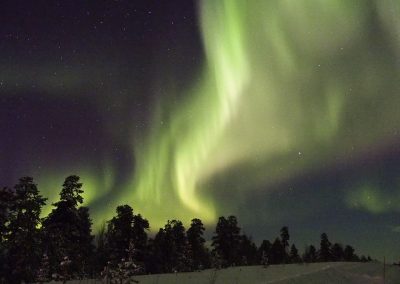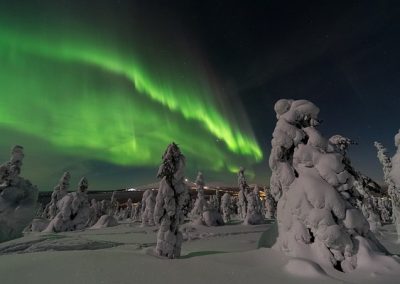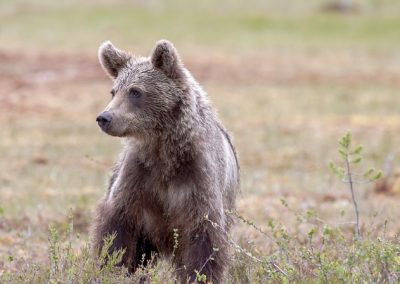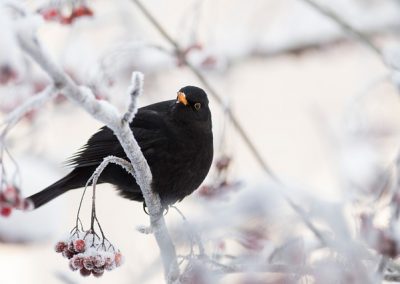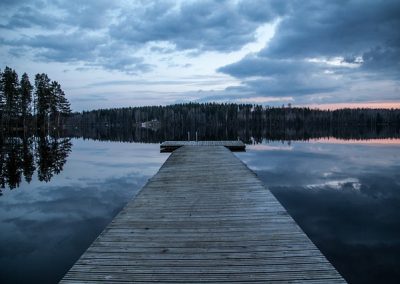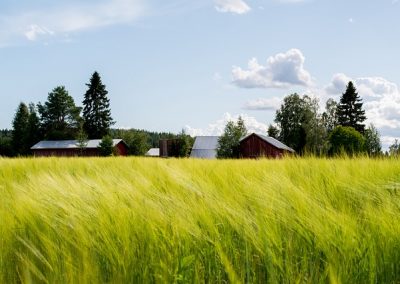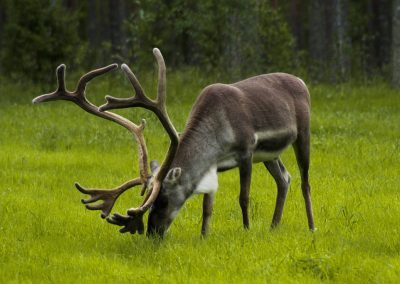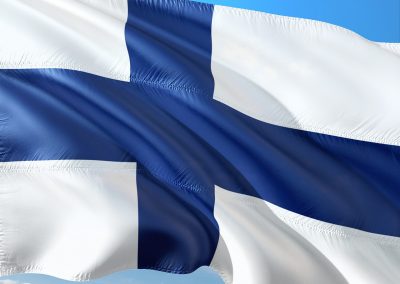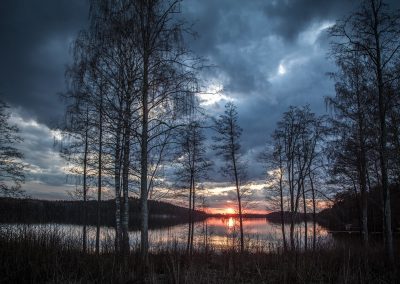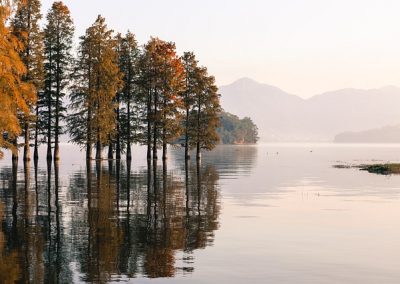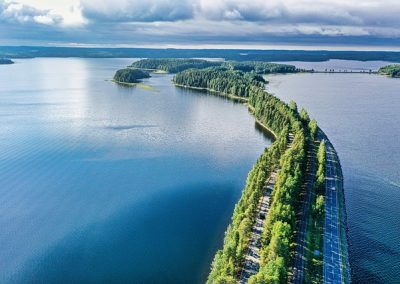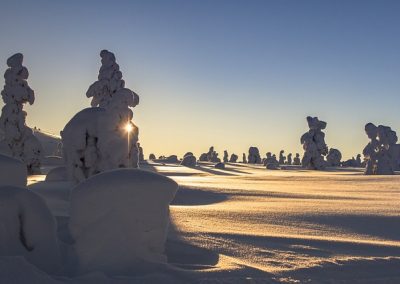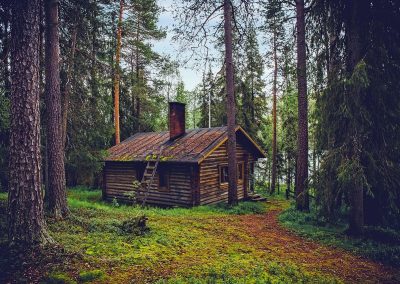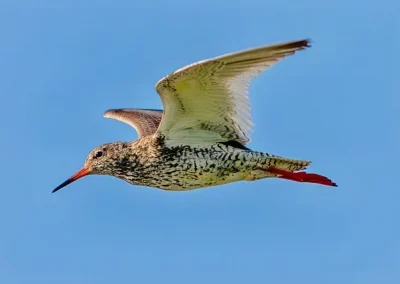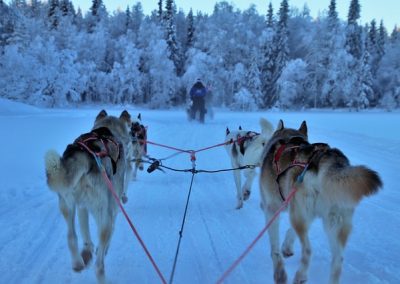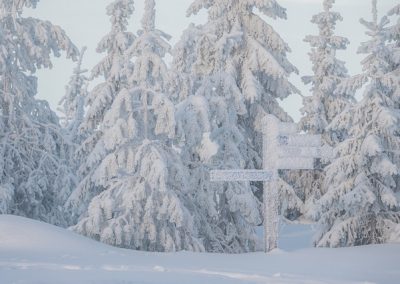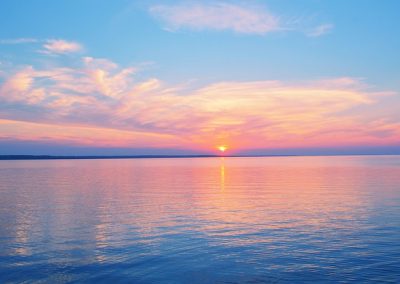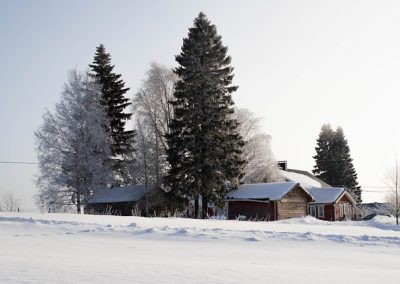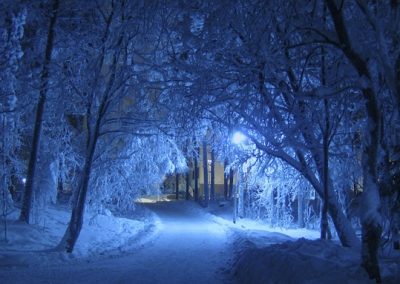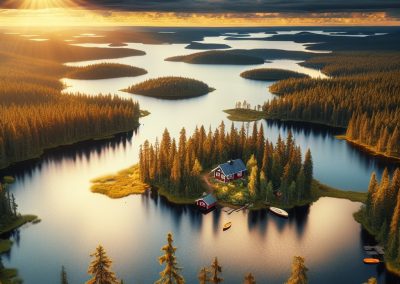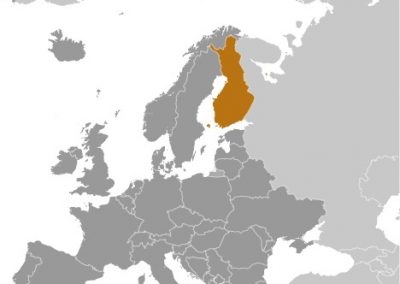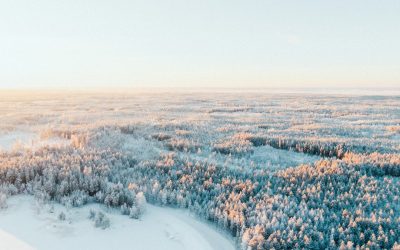Finland
(Suomen Tasavalta (Finnish); Republiken Finland (Swedish) (Republic of Finland))

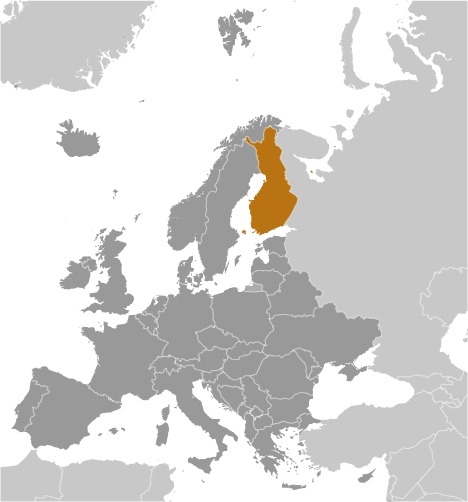
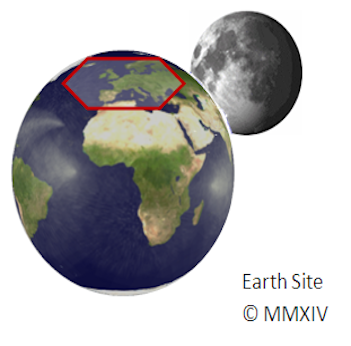
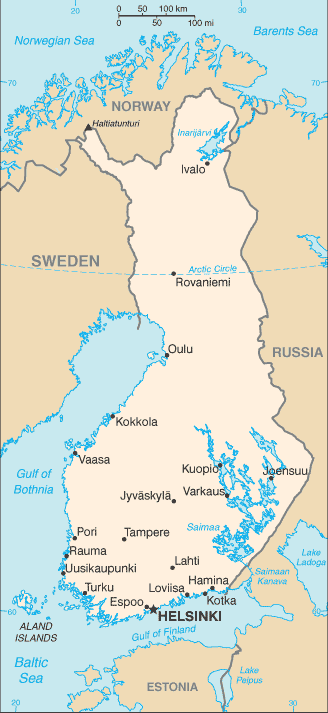
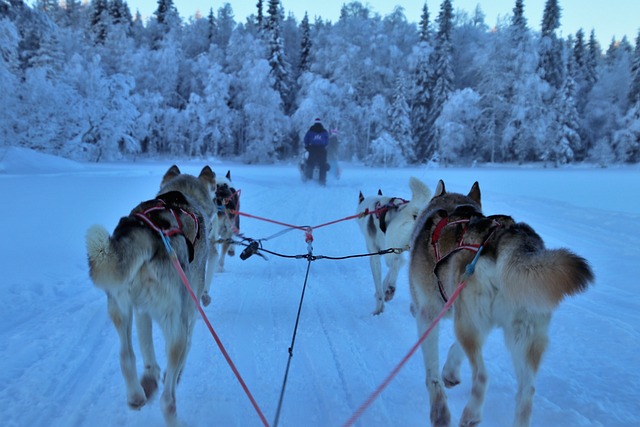
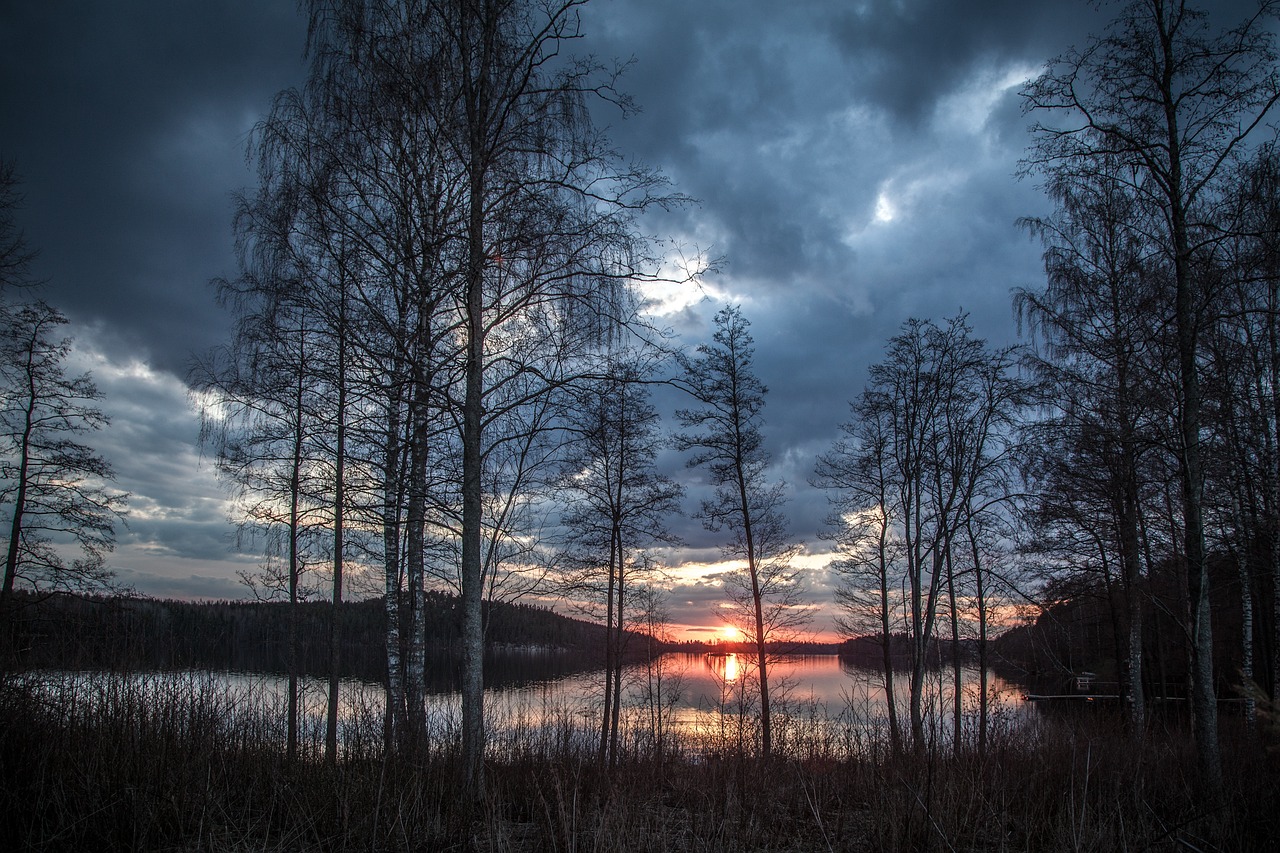
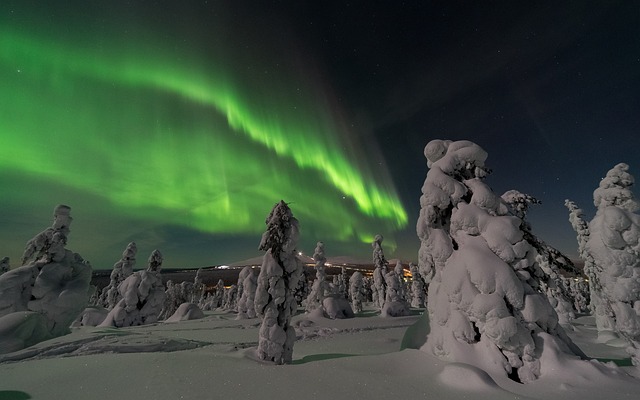
Capital: Helsinki
Population (Estimated July 2012): 5,262,930
Area Total: 338,424 km2 or 130,666 mi2
Currency: Euro (€)
Official Language: Finnish or Swedish
Political Information: Parliamentary Republic
Official Religion: Lutheran Church of Finland (approximately 82.5% of the population are Lutheran, 2.3% have other religious beliefs and 15.1% have no religious beliefs)
Highest Mountain: Haltiatunturi at 1,328m or 4,357ft
Largest River:
Time Zone (GMT/UTC): +2:00
Wildlife:
Counties/Provinces/States: 19 regions (maakunnat, singular – maakunta (Finnish); landskapen, singular – landskapet (Swedish)); Aland (Swedish), Ahvenanmaa (Finnish); Etela-Karjala (Finnish), Sodra Karelen (Swedish) [South Karelia]; Etela-Pohjanmaa (Finnish), Sodra Osterbotten (Swedish) [South Ostrobothnia]; Etela-Savo (Finnish), Sodra Savolax (Swedish) [South Savo]; Kanta-Hame (Finnish), Egentliga Tavastland (Swedish); Kainuu (Finnish), Kajanaland (Swedish); Keski-Pohjanmaa (Finnish), Mellersta Osterbotten (Swedish) [Central Ostrobothnia]; Keski-Suomi (Finnish), Mellersta Finland (Swedish) [Central Finland]; Kymenlaakso (Finnish), Kymmenedalen (Swedish); Lappi (Finnish), Lappland (Swedish); Paijat-Hame (Finnish), Paijanne-Tavastland (Swedish); Pirkanmaa (Finnish), Birkaland (Swedish) [Tampere]; Pohjanmaa (Finnish), Osterbotten (Swedish) [Ostrobothnia]; Pohjois-Karjala (Finnish), Norra Karelen (Swedish) [North Karelia]; Pohjois-Pohjanmaa (Finnish), Norra Osterbotten (Swedish) [North Ostrobothnia]; Pohjois-Savo (Finnish), Norra Savolax (Swedish) [North Savo]; Satakunta (Finnish and Swedish); Uusimaa (Finnish), Nyland (Swedish) [Newland]; Varsinais-Suomi (Finnish), Egentliga Finland (Swedish) [Finland Proper]
Additional: Independence from Russia on the 6th of December 1917.
Finland
Finland, officially known as the Republic of Finland, is a Nordic country located in Northern Europe. It shares its borders with Sweden to the west, Russia to the east, and Norway to the north, while Estonia lies to its south across the Gulf of Finland. The country is known for its stunning natural landscapes, including thousands of lakes, dense forests, and the iconic Northern Lights. With a population of around 5.5 million people, Finland is one of the most sparsely populated countries in Europe. The capital city, Helsinki, is a vibrant hub of culture and innovation, while other major cities such as Espoo, Tampere, and Turku also contribute to the country’s rich heritage and modern development.
Finland is renowned for its high standard of living, excellent education system, and strong emphasis on environmental sustainability. The country has a rich history and culture, with deep-rooted traditions and a strong sense of national identity. Finnish people are known for their love of nature and outdoor activities, and the country’s stunning natural beauty attracts visitors from all over the world. From the breathtaking archipelago in the southwest to the rugged wilderness of Lapland in the north, Finland offers a diverse range of experiences for travellers and locals alike.
Geography and Climate
Finland is a land of contrasts, with its diverse geography ranging from coastal plains to rolling hills and vast forests. The country is known for its thousands of lakes, which cover around 10% of its total land area. The largest of these is Lake Saimaa, located in the southeast, which is also home to the endangered Saimaa ringed seal. In addition to its numerous lakes, Finland is also famous for its archipelago, which consists of thousands of islands scattered along the coastline. The Åland Islands, an autonomous region of Finland, are located in the Baltic Sea between Finland and Sweden and are known for their unique culture and picturesque landscapes.
The climate in Finland varies significantly from region to region, with the southern coastal areas experiencing milder winters and warmer summers, while the northernmost parts of the country have subarctic and arctic climates. The winter months bring snow and freezing temperatures, making Finland a popular destination for winter sports enthusiasts. In contrast, the summer months see long days with almost 24 hours of daylight in the northern regions, allowing for outdoor activities such as hiking, fishing, and wildlife watching. The changing seasons in Finland offer a unique opportunity to experience the country’s natural beauty in all its forms.
History and Culture
Finland has a rich and complex history that has shaped its unique culture and national identity. The country was part of the Kingdom of Sweden for over 600 years until it was ceded to the Russian Empire in 1809. After gaining independence from Russia in 1917, Finland has developed into a modern welfare state with a strong emphasis on equality and social justice. The Finnish people are known for their resilience and determination, as demonstrated during the Winter War against the Soviet Union in 1939-1940.
Finnish culture is deeply rooted in nature and folklore, with a strong emphasis on traditional music, dance, and storytelling. The national epic, the Kalevala, is a collection of ancient Finnish mythology and folklore that has had a profound influence on Finnish arts and literature. The country is also famous for its design and architecture, with iconic figures such as Alvar Aalto and Eero Saarinen leaving a lasting legacy in the field of modern design. Finnish cuisine is known for its use of fresh, local ingredients such as fish, berries, and mushrooms, as well as traditional dishes like rye bread, smoked salmon, and reindeer meat.
Economy and Industry
Finland has a highly industrialised economy with a strong focus on technology, innovation, and sustainability. The country is home to several multinational corporations such as Nokia, KONE, and UPM-Kymmene, which have made significant contributions to the global market. Finland is also known for its expertise in clean technology and renewable energy, with a commitment to reducing carbon emissions and promoting sustainable development. The forestry industry plays a significant role in the Finnish economy, with timber production and paper manufacturing being major contributors to export revenue.
In recent years, Finland has seen a rise in entrepreneurship and start-up culture, particularly in the fields of technology and gaming. The country has produced several successful tech companies such as Rovio Entertainment (creator of Angry Birds) and Supercell (developer of Clash of Clans), which have gained international recognition for their innovative products. The Finnish government has also invested heavily in research and development, leading to breakthroughs in areas such as biotechnology, healthcare, and artificial intelligence. With a strong emphasis on education and innovation, Finland continues to be at the forefront of technological advancement on the global stage.
Education and Innovation
Finland is renowned for its world-class education system, which consistently ranks among the best in the world. The Finnish approach to education emphasises equality, individualised learning, and holistic development. Children start school at the age of seven and receive a comprehensive education that includes a strong focus on creativity, critical thinking, and problem-solving skills. There are no standardised tests or homework for young students, allowing them to learn through play and exploration.
In addition to its exceptional primary and secondary education system, Finland also boasts several top-ranking universities and research institutions. The University of Helsinki, Aalto University, and the University of Turku are just a few examples of institutions that have made significant contributions to academic research and innovation. Finland’s commitment to lifelong learning and continuous professional development has led to a highly skilled workforce that is well-equipped to meet the demands of a rapidly changing global economy.
Wildlife and Nature
Finland’s diverse natural landscapes provide a habitat for a wide variety of wildlife species, including bears, wolves, lynx, elk, and reindeer. The country’s national parks and wilderness areas offer opportunities for nature enthusiasts to observe these animals in their natural environment. The Finnish archipelago is home to numerous bird species such as sea eagles, ospreys, and migratory waterfowl, making it a popular destination for birdwatching.
The Finnish government has implemented strict conservation measures to protect its natural habitats and wildlife populations. National parks such as Nuuksio, Oulanka, and Lemmenjoki offer visitors the chance to explore pristine forests, crystal-clear lakes, and rugged wilderness areas while respecting the delicate balance of nature. In addition to its terrestrial ecosystems, Finland’s coastal waters are teeming with marine life such as seals, salmon, and Baltic herring. The country’s commitment to sustainable tourism ensures that future generations will be able to enjoy Finland’s natural beauty for years to come.
Tourism and Attractions
Finland offers a wide range of attractions for visitors seeking unique cultural experiences and outdoor adventures. The capital city of Helsinki is a vibrant metropolis with a rich history and modern amenities. Visitors can explore iconic landmarks such as the Helsinki Cathedral, Suomenlinna Sea Fortress, and the contemporary art museum Kiasma. The city also boasts a thriving culinary scene with diverse restaurants offering traditional Finnish dishes as well as international cuisine.
For nature lovers, Finland’s Lapland region is a must-visit destination with its stunning wilderness areas and opportunities for outdoor activities such as hiking, skiing, and snowmobiling. In winter, visitors can witness the magical Northern Lights dancing across the night sky or embark on a husky safari through snow-covered forests. In summer, the region offers endless opportunities for fishing, canoeing, and wildlife spotting in the midnight sun.
Other popular attractions in Finland include the UNESCO World Heritage site of the Suomenlinna Sea Fortress, the medieval town of Porvoo with its charming wooden houses, and the vibrant cultural festivals held throughout the year. Whether seeking adventure in the great outdoors or immersing oneself in Finnish history and culture, Finland offers something for every type of traveller.
FAQs
What is the population of Finland?
The population of Finland is approximately 5.5 million people.
What is the capital city of Finland?
The capital city of Finland is Helsinki.
What is the official language of Finland?
The official languages of Finland are Finnish and Swedish.
What is the currency used in Finland?
The currency used in Finland is the Euro.
What are some popular tourist attractions in Finland?
Some popular tourist attractions in Finland include the Northern Lights, Santa Claus Village in Rovaniemi, the capital city of Helsinki, and the archipelago in the southwest.
What is the climate like in Finland?
Finland has a temperate climate with four distinct seasons. Winters are cold and snowy, while summers are mild and sunny.
What are some traditional Finnish dishes?
Some traditional Finnish dishes include salmon soup, Karelian pasties, and reindeer meat.
What are some famous Finnish inventions?
Famous Finnish inventions include the sauna, the heart rate monitor, and the Linux operating system.
What is the education system like in Finland?
Finland has a highly regarded education system, with a strong emphasis on equal opportunities and individualized learning. School is compulsory for children aged 7 to 16.
Natural Resources of Finland: Where Natural Resources are located In Finland
Finland is a country rich in natural resources, which have played a significant role in its economic development. The country’s natural resources include forests, minerals, water, agricultural land, renewable energy sources, and diverse wildlife. These resources have been crucial in shaping Finland’s economy and have contributed to its status as one of the most prosperous and advanced countries in the world. The sustainable management of Finland’s natural resources has been a key priority for the country, and it has led to the development of innovative technologies and practices that have helped to preserve and protect these valuable assets. Finland’s natural resources have also been a source of national pride and have contributed to the country’s strong environmental ethos. In this article, we will explore the various natural resources that Finland possesses and their significance to the country’s economy and environment. Summary Finland is rich in natural resources, including forests, minerals, water, agriculture, renewable energy sources, and diverse wildlife. The country’s forests are a significant natural resource, providing timber for various industries and contributing to the economy. Finland has abundant mineral and metal resources, including iron ore, copper, nickel, and gold, which are essential for the country’s industrial development. Water resources in Finland are plentiful, with numerous lakes and rivers providing opportunities for hydropower generation and freshwater supply. The country’s agricultural resources are diverse, with a focus on dairy and meat production, as well as crop cultivation in the fertile plains. Finland is a leader in renewable energy sources, with a focus on wind, solar, and bioenergy to reduce reliance on fossil fuels and promote sustainability. The country’s wildlife and...
Climate Zones Of Finland: Different climate regions Of Finland
Finland is a country located in Northern Europe, and it is known for its diverse climate zones. The country experiences a wide range of temperatures and weather patterns due to its geographical location. Finland is divided into six main climate zones, each with its own unique characteristics and weather conditions. These climate zones include the Southern Coastal Climate Zone, Western Coastal Climate Zone, Inland Climate Zone, Northern Climate Zone, Eastern Climate Zone, and Arctic Climate Zone. Each of these zones has its own distinct climate, influenced by factors such as proximity to the sea, latitude, and topography. Understanding the different climate zones in Finland is essential for anyone planning to visit or live in the country, as it can greatly impact the activities and experiences available in each region. Summary Finland has a diverse climate with seven distinct climate zones. The Southern Coastal Climate Zone has mild winters and warm summers, with the highest average temperatures in the country. The Western Coastal Climate Zone experiences mild winters and cool summers, with the highest amount of rainfall in Finland. The Inland Climate Zone has cold winters and warm summers, with the greatest temperature variations in the country. The Northern Climate Zone has long, cold winters and short, mild summers, with the lowest average temperatures in Finland. The Eastern Climate Zone has cold winters and warm summers, with less rainfall than the western coastal areas. The Arctic Climate Zone has extremely cold winters and short, cool summers, with the lowest average temperatures and highest snowfall in Finland. Southern Coastal Climate Zone The Southern Coastal Climate Zone in Finland is characterized by...
Political Boundaries of Finland: Provinces, Districts, or Historical Boundaries.
Finland, located in Northern Europe, is a country known for its stunning natural landscapes, vibrant culture, and efficient governance. The political boundaries of Finland play a crucial role in the administration and governance of the country. The country is divided into provinces and further into districts, each with its own unique characteristics and significance. The political boundaries of Finland have evolved over time, influenced by historical, cultural, and administrative factors. Understanding the political boundaries of Finland is essential to comprehend the governance and administration of the country. Finland’s political boundaries are not only geographical divisions but also represent the cultural and historical significance of different regions. The provinces and districts of Finland have their own distinct identities, which contribute to the diverse fabric of the country. The impact of these political boundaries on governance and administration is significant, as they influence decision-making processes, resource allocation, and local governance. In this article, we will explore the provinces and districts of Finland, delve into the historical boundaries of the country, and analyze the impact of these political boundaries on governance and administration. Summary Finland is divided into 19 regions, each with its own political boundaries and governance structure. The provinces of Finland are historical regions that have lost their administrative significance but still hold cultural and historical importance. Districts in Finland are the primary administrative divisions, responsible for local governance and public services. Finland’s historical boundaries have evolved over time, influenced by wars, treaties, and geopolitical changes. The comparison of provinces, districts, and historical boundaries highlights the complexity and diversity of Finland’s political landscape. Provinces of Finland Finland is divided into...
Terrain and Topography of Finland: mountains, valleys, and plains.
Finland, located in Northern Europe, is known for its diverse and unique terrain and topography. The country is characterized by its thousands of lakes, dense forests, and rugged landscapes. Finland’s terrain is shaped by the last ice age, which left behind a multitude of glacial features such as eskers, drumlins, and moraines. The topography of Finland is also influenced by its proximity to the Baltic Sea and the Gulf of Bothnia, which has resulted in a coastline dotted with numerous islands and archipelagos. The country’s terrain and topography play a crucial role in shaping its climate, environment, and human activities. Summary Finland’s terrain is characterized by a diverse mix of mountains, valleys, lowlands, plains, and plateaus. The mountainous regions of Finland, such as the Scandinavian Mountains, offer stunning landscapes and opportunities for outdoor activities. The valleys and lowlands of Finland are home to fertile agricultural land and important waterways. The plains and plateaus of Finland provide vast expanses of open space and support a variety of flora and fauna. The terrain and topography of Finland greatly influence its climate and environment, impacting factors such as temperature, precipitation, and biodiversity. The Mountainous Regions of Finland While Finland is not known for its towering mountain ranges, it does have some notable mountainous regions. The most prominent of these is the Scandinavian Mountains, which extend into the northernmost part of Finland. This region is characterized by rugged peaks, deep valleys, and dramatic landscapes. The highest peak in Finland, Halti, is located in this mountainous region and stands at 1,324 meters above sea level. The mountainous regions of Finland are home to a...
History of Finland
Finland has a rich history that dates back to the early settlements of the region. The first evidence of human habitation in Finland dates back to around 8500 BC, with the arrival of the Stone Age settlers. These early inhabitants were hunter-gatherers who lived off the land and relied on natural resources for their survival. Over time, the population grew, and the people began to establish permanent settlements, engaging in agriculture and animal husbandry. During the Viking Age, Finland was influenced by the expansion of the Viking culture from Scandinavia. The Vikings established trade routes and settlements along the coast of Finland, bringing with them their language, customs, and traditions. This period also saw the introduction of Christianity to the region, as missionaries from Sweden and Denmark began to spread the Christian faith among the Finnish people. The Viking Age also brought about increased contact with the rest of Europe, as Finnish traders and craftsmen began to travel to other parts of the continent. This exchange of goods and ideas helped to shape the culture and society of Finland, laying the foundation for the country’s future development. Summary Early settlements in Finland date back to the Stone Age, with the Viking Age bringing trade and cultural exchange to the region. Swedish rule in Finland led to the rise of the Finnish identity, with the Finnish language and culture beginning to flourish. Russian influence grew in Finland, leading to the establishment of the Grand Duchy of Finland and increased autonomy for the region. Finland gained independence in 1917, but the Finnish Civil War followed, resulting in a division between the...
Cultural or Historical Sites of Finland: Important Cultural Landmarks or Historical Sites in Finland
Finland is a country rich in cultural and historical sites, offering visitors a glimpse into its fascinating past and vibrant present. From UNESCO World Heritage Sites to iconic landmarks, historical sites, and unique cultural experiences, Finland has something to offer for every type of traveller. The country’s diverse history, from its indigenous Sami culture to its medieval castles and modern architecture, provides a wide range of cultural and historical sites to explore. The Finnish landscape is dotted with ancient fortresses, picturesque towns, and stunning natural beauty, making it a haven for history enthusiasts and nature lovers alike. Whether you’re exploring the bustling capital city of Helsinki, the historic city of Turku, or the enchanting wilderness of Lapland, you’ll find a wealth of cultural and historical sites to discover. Finland’s rich cultural heritage and unique historical sites make it a must-visit destination for anyone interested in history, architecture, and the natural world. Summary Finland is home to a rich cultural and historical heritage, with a diverse range of sites to explore. The UNESCO World Heritage Sites in Finland include the Old Rauma, Suomenlinna, and the Struve Geodetic Arc, showcasing the country’s unique history and natural beauty. Helsinki, the capital of Finland, is home to iconic landmarks such as the Helsinki Cathedral, Suomenlinna Sea Fortress, and the Sibelius Monument. Turku, the oldest city in Finland, boasts historical sites such as Turku Castle, Turku Cathedral, and the Aboa Vetus & Ars Nova museum. Lapland offers unique cultural sites, including the Arktikum Science Centre, the Santa Claus Village, and the Ranua Wildlife Park, providing a glimpse into the region’s indigenous culture and natural...
Population Density of Finland
Population density refers to the number of people living in a specific area, usually measured in square kilometres or square miles. It is an important demographic indicator that provides insights into the distribution of people within a country or region. Population density can vary widely from one place to another, and it is influenced by a variety of factors such as geographical features, economic opportunities, and social and cultural factors. Understanding population density is crucial for urban planning, resource allocation, and the provision of public services. Summary Population density refers to the number of people living in a specific area, usually measured in square kilometres. Factors affecting population density in Finland include climate, economic opportunities, and government policies. The distribution of population in Finland is concentrated in the southern and western regions, with lower density in the northern and eastern areas. Urban areas in Finland have higher population density compared to rural areas, which impacts infrastructure and services. Population density in Finland has a significant impact on the provision of healthcare, education, and transportation services. Factors Affecting Population Density in Finland Finland, a Nordic country located in Northern Europe, has a relatively low population density compared to many other European countries. Several factors contribute to this phenomenon. Firstly, Finland’s harsh climate and vast areas of forests and lakes make large parts of the country uninhabitable. The northern regions of Finland, in particular, have very low population densities due to their remote location and extreme weather conditions. Additionally, the historical pattern of rural exodus has led to depopulation in many rural areas, as people have migrated to urban centres in...
Unravelling the Enchanting Charms of Finland: A Journey Through the Land of a Thousand Lakes
Finland, located in Northern Europe, is a country known for its stunning natural beauty and rich cultural heritage. With its vast forests, thousands of lakes, and picturesque landscapes, Finland offers a unique and unforgettable travel experience. The country is also home to a vibrant and welcoming culture, with a strong emphasis on nature, sustainability, and equality. Finland is a popular travel destination for many reasons. Firstly, its natural beauty is unparalleled. From the breathtaking Northern Lights to the serene lakes and forests, Finland offers a wide range of outdoor activities and experiences. Whether you’re interested in hiking, fishing, kayaking, or simply enjoying the peacefulness of nature, Finland has something for everyone. Additionally, Finland’s cities are vibrant and full of life. Helsinki, the capital city, is known for its modern architecture, bustling markets, and vibrant nightlife. Turku, the former capital city, offers a glimpse into Finland’s history with its medieval castle and charming old town. Both cities offer a unique blend of old-world charm and modern amenities. Summary Finland is a land of natural beauty and rich culture. The country boasts of a thousand lakes that offer a magical experience. Helsinki and Turku are vibrant cities that are worth exploring. The Sami people have a fascinating history and traditions that are worth learning about. Finland is famous for its saunas, spas, and cuisine, including reindeer meat and berry pies. Discovering the Magic of Finland’s Thousand Lakes Finland is often referred to as the “Land of a Thousand Lakes,” and for good reason. With over 188,000 lakes scattered throughout the country, Finland offers endless opportunities for outdoor activities and relaxation. One...
